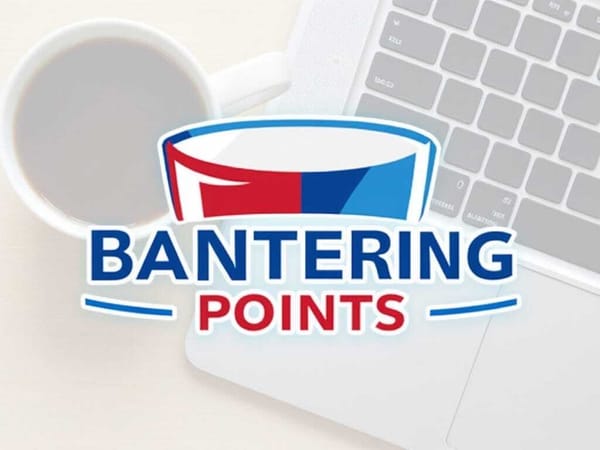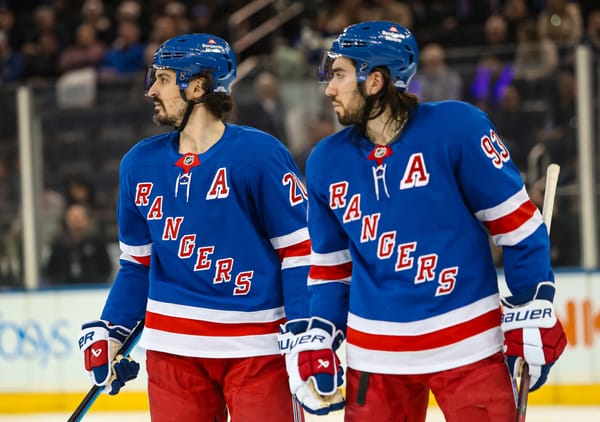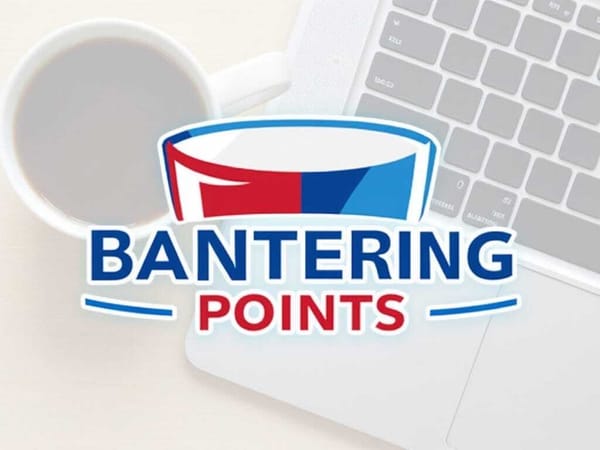Blueshirt Banter 2018 NHL Draft Rankings - #31 Bode Wilde
Bode Wilde, US National Team Development Program (USHL)
Vitals
Position: Right Defense
Age on Draft Day: 18.45 Years Old
Height/Weight: 6’2.5, 198 pounds
2017-2018 Stats (USHL Only): 25 GP, 3 G, 13 A, 16 PIM, +19
Draft Rankings
NHL Central Scouting: 17th (North American Skaters)
Future Considerations: 12th
Craig Button (TSN): 16th
Corey Pronman (The Athletic): 19th
Canucks Army: 29th
ISS Hockey: 23rd
Scott Wheeler (The Athletic): 25th
HockeyProspect.com: 31st
Scouting Report
We finish up our top-31 with a run of USNTDP players. Bode Wilde is a skilled offensive defenseman. At his best, he is many things teams want on their blue-line. At nearly 6’3 and 200 pounds, he is close to NHL size and skates like the wind. One could make a lengthy highlight reel of some of his best plays on the puck. He is capable of putting together some great rushes up the ice. Here are a few examples.
There are some defensemen in this draft who are good at skating the puck through open lanes and creating a zone entry. Wilde is capable of more, though. He’ll skate right through the heart of a neutral zone setup and make players whiff. Once in the offensive zone, he won’t just merely curl back and hand the puck off, but he’ll go one step further and drive with possession towards the net.
He is also a tremendously creative player with the puck. Again, this is not a player who defers to others to make plays. He likes to stickhandle with the puck for extended periods and beat defenders, breaking the opposition’s defensive shape and creating scoring chances by himself.
If teams were only shown video of every prospect’s best plays of the season, Wilde would be in the discussion as a potential top-10 pick in the draft. The problem for him, on the offensive side, is consistency. Yes, he makes some great plays, but too often he gets himself into trouble. I’m pretty vocal about how risk-adverse hockey coaches can be to their own detriment, but in Wilde’s case I think it’s very fair to question whether Wilde does too much harm sometimes. He turns the puck over often, and it’s not just from trying to make big plays, but also from unforced errors. Here is one of many examples from my viewings.
Based on the tracking done by Mitch Brown of The Athletic, Wilde struggles to create successful zone exits, and he’s just okay on zone entries. As previously demonstrated, he is a great skater and has some good moves in his repertoire. It’s not a problem of ability for him, but rather just poor risk assessment. He has a lot of work to do to improve his decision making and reach that balance where the rewards outnumber the messes he creates.
There are also some very legitimate concerns with Wilde’s defensive game. The turnovers and poor decisions already can lead to odd-man rushes for the opposition. He also can get caught up the ice, leaving USA vulnerable in the back. To his credit, Wilde does work hard to backcheck, and with his speed he is able to recover and snuff out problems. Not just self-inflicted ones, but also moments where his team is exposed.
His awareness is not great, either. He is slow to read situations and pick up on what his coverage needs to be on a play. Sometimes, these instances are borderline frustrating. What him (#15 in white) here, as he’s completely unaware to the breakaway that is about to unfold. A poor pass bails him out.
Again, referring to Mitch Brown’s work, Wilde had an adverse effect on Team USA’s share of Corsi as well as his measure of scoring chances. It’s a small sample size with ambiguity in methodology, but it matches my own observations.
In the revolutionary book Moneyball, significant importance is put on Oakland Athletics’ General Manager Billy Beane’s perspective on scouting. Beane found that too many scouts focused on what a player looked like instead of what his output was.
This very much applies in hockey as well. Wilde is an extremely impressive talent. He has good size, his skating is well above average. He has good hands and can make magical plays happen. For those reasons, I can see why scouts are high on him, and I can see a team grabbing him as high as the early teens.
But when it comes to analyzing his overall impact over the course of a seven-game span, I think Wilde is not delivering consistently. Of course, teams do not care about what Wilde is now. Their interest is in kind of player they can help him become five years from now. Stylistically, Wilde reminds me of Sean Day. He has the kind of innate tools and abilities that teams dream of finding, but the maturation process is going to be a massive, hands-on project. I think there are some concerns about whether Wilde himself is up for the task, but even with the best intentions there are hardly any guarantees. For me, there’s too much uncertainty to justify taking him with a mid-first round selection, but in the 20s or early second round he is a really interesting gamble. And for a Rangers team with a lot of draft picks and therefore some margin for error, he could be a smart play at 26th or 28th overall.
What Others Have Said
USNTDP U18 Head Coach Seth Appert (via Colorado Avalanche team website):
“He’s activating in the rush as we want him too. The more he learns that give-and-go style, the more dangerous he’ll become.”
Chris Dilks, SBN College Hockey:
“There are very few players his size with his maneuverability. But watching a player in his draft year, scouts become picky and start looking for negatives with a player, and I think they’ll certainly find some with Wilde when it comes to his play with the puck.”




